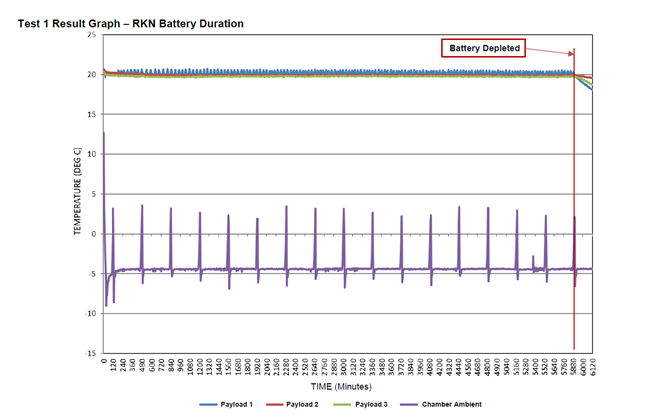As the world awaits a COVID-19 vaccine, the cold chain industry is doing everything possible to prepare for the eventual distribution effort. This is no small task and it will require cooperation on levels we’ve never imagined. With all that on our plate, why am I talking to you about batteries? It’s a good question and the answer is simple: it’s not really about the battery.
Isn’t a battery just a battery?
Battery performance isn’t something we often discuss in terms of innovation in the cold chain. Batteries are a critical component of any active temperature-controlled container, but a battery is a battery, right? Well, yes and no. Batteries are designed and manufactured to meet every demand you might imagine. However, battery performance can vary. A pharmaceutical shipper can take identical two batteries, install them in two different active containers, send those containers out on a shipment under identical conditions and have very different battery performance results. Why? The answer lies in the container design and technology.
Testing the theory
A couple of months ago a customer contacted us and asked our engineers to test the CSafe RKN according very specific parameters and document the battery performance. We of course agreed and conducted the test in our ISTA Certified Testing Laboratory.
The team loaded a CSafe RKN cargo compartment with a preconditioned payload of 60kg of bottled water and configured the container to maintain the payload temperature at +20 °C. They set the temperature in the test chamber to a constant -5 °C and monitored the battery performance. Once the test was complete and the data was documented, we contacted the customer to share the results that under those conditions, the battery run time was more than 98 hours.
 Are the results unusual?
Are the results unusual?
That’s exactly what we asked the customer when they reacted with surprise at these results. Battery performance does vary based the thermal profile a payload requires and CSafe containers have exceeded 120 hours with other customer specific combinations of payload and ambient profiles. But the solution this customer had been using for some of their shipments could only maintain power for 25-30 hours under the same conditions used in our test. Now, the batteries in the CSafe containers and this other solution are not identical, but in theory should perform equally well. Which is why the difference in run time provides key insights into overall container quality and system autonomy.
How container design drives improved battery performance
Insulation, temperature management and air circulation are the key design features in CSafe containers that directly affect system autonomy and extend battery duration.
Insulation
A container’s insulation allows it to use passive energy to maintain the desired temperature thereby reducing the drain on the battery. Vacuum Insulated Panel (VIP) insulation provides 10 times greater thermal efficiency than standard foam insulation. CSafe containers use the highest quality VIP available and provide the longest hold over time in the industry – up to 6 times better than the industry standard. The VIP in CSafe containers provides the best maximum and minimum ambient temperature operation with no limitations which further reduces the impact on the payload to extend the battery run time.
In addition to preserving battery life, this passive holdover performance allows ample time to react and preserve the payload in the event of a power outage or lack of power supply.
Temperature Management
This is the system within an active container that monitors the payload temperature and automatically adjusts the heating and cooling systems to maintain the required temperature. Many systems do this by monitoring outflow air temperatures. The more often the heating and cooling system is used the larger the drain on the battery. This is why CSafe containers use a full array of 10 sensors in the CSafe RAP (six in the RKN) to monitor zone locations throughout the payload compartment and most importantly the return airflow to precisely regulate payload temperatures. The additional monitoring allows for tighter temperature tolerances and reduced battery usage further prolonging battery life.
Airflow System
Maintaining uniform temperature throughout a container is dependent on regulation by the airflow system. An airflow system has the potential to develop hot or cold zones based on the design. These hot or cold zones would force the temperature management system to overcompensate requiring additional battery power.
CSafe containers use an innovative air recirculation system that fully encapsulates the payload with controlled, conditioned air on all sides. This provides accurate temperature mapping, creates uniform temperature throughout the container and prevents ambient temperature convection especially when sitting on a hot tarmac. Preventing these hot and cold zones allows the container to better manage the payload temperature and preserve the battery life.
Maintenance
While it has nothing to do with design, container maintenance is just as important in overall battery performance. Testing batteries on a regular schedule is standard for container maintenance. However, after a certain time period even if a battery passes a performance test, the likelihood that it could begin to degrade prior to another test increases. This is why CSafe replaces container batteries every three years as part of our Preventive Maintenance Rebuild program.
Final Thoughts
In a world that is experiencing dramatic constraints, unprecedented uncertainty and variability, extended operation on battery power is more important than ever. We now know that shippers must be prepared to safely move their products accounting for risks related to a pandemic, major political shifts like Brexit and long-term trade wars on top of record-breaking hurricane seasons and a plethora of other natural disasters that can impede air travel.
As we prepare for the monolithic task ahead to distribute a COVID-19 vaccine, air cargo container battery performance should be top of mind for every pharmaceutical manufacturer – whether or not the product inside the container is a COVID-19 vaccine. All medications will need to continue to move around the world and until the pandemic nears an end, the transportation challenges we’re seeing now won’t ease by much.


